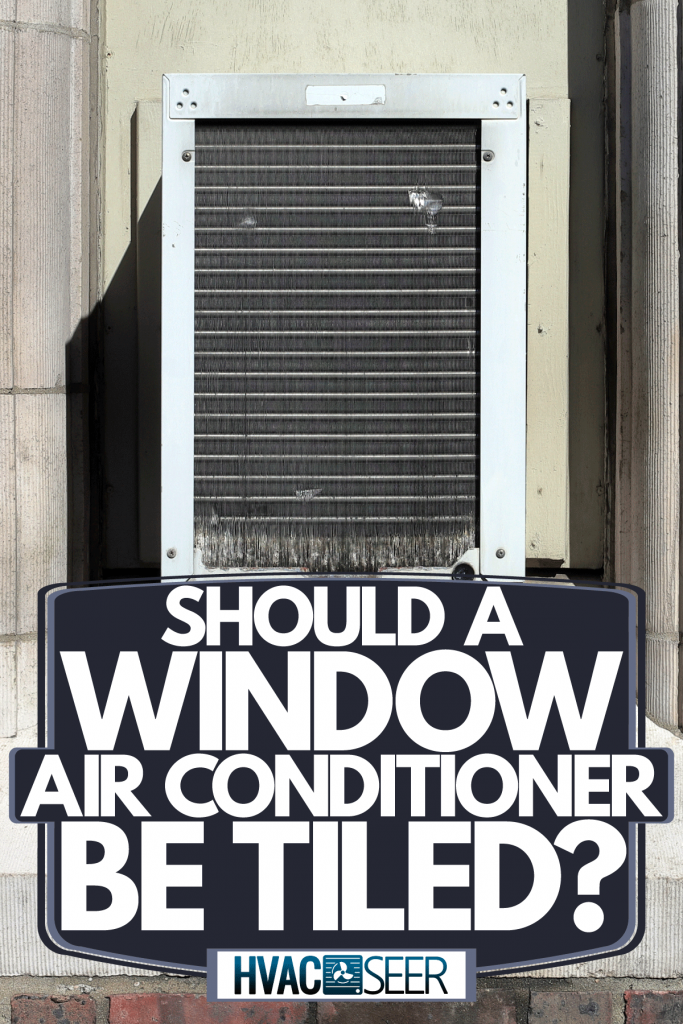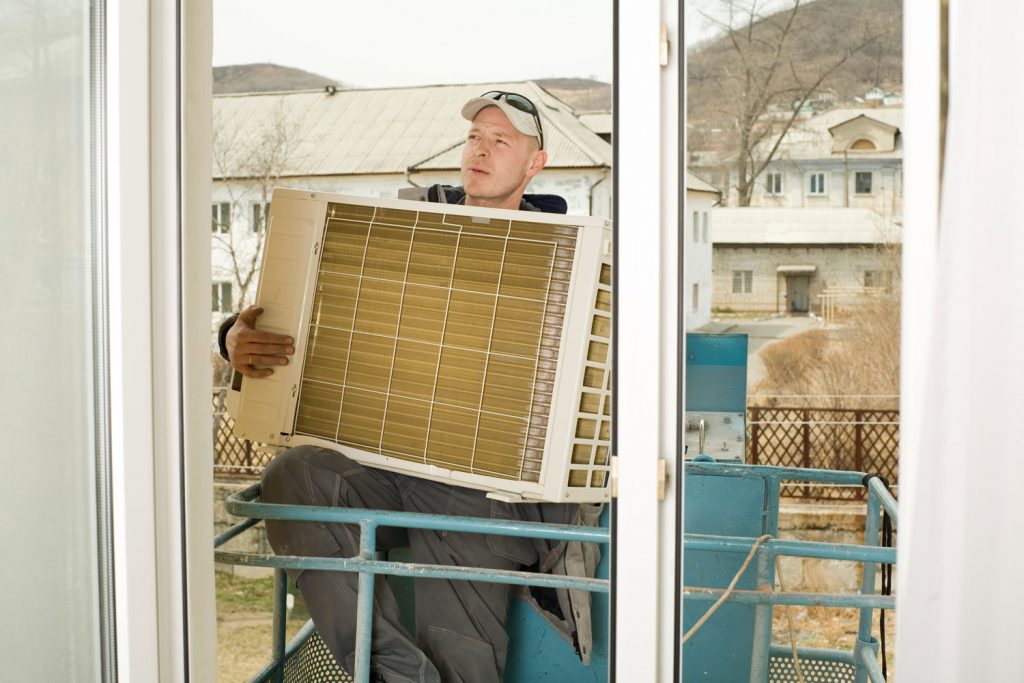If you're getting ready to install your first window air conditioner unit, you need to know how to properly place it in the window. You are likely wondering if it should be tilted and if there is a way to keep it from dripping water. With temperatures on the rise, we knew you would have questions. Therefore, we thoroughly researched the topic and have the answers presented below.
In most cases, a window air conditioner should be tilted. However, some newer models no longer require a tilt. Read the instructions beforehand to determine the best method of installation for your window unit.
You now know that most window ACs need to be tilted, but there is still a lot to learn. Keep reading to find out if all air conditioners drip water, what will happen if you place it on its side, and other pressing questions.

Should a Window Air Conditioner be Tilted?
In the past, every window air conditioner needed to be tilted. While most still need a slight tilt, some newer models no longer require it. Read the instructions before installation to find out for certain if your unit will need to be tilted.

How Do You Tilt a Window Air Conditioner?
When installing an air conditioner, most units require a half-inch tilt. Make sure you get someone to help you install the window AC because they are bulky and heavy. They usually come with bracing brackets included. If none came with your new AC, you should purchase a set separately.
With help, place the air conditioner in the window. Push it back until the window meets the metal flange at the front. Now, it's time to screw the brackets into place. One should go on the left side and one on the right, tilting the unit slightly lower on the outside section of the window.
At this point, you are probably wondering why the tilt is necessary in the first place. Window air conditioners drip water. If the unit is tilted appropriately, the drip will fall onto the ground outside. However, if it is not tilted enough, the water will drip inside the air conditioner and possibly down the wall inside your home. If this happens, you will need to readjust your air conditioner. If water drips inside for too long, it can cause mold and other types of water damage.
Do All Air Conditioners Drip Water?
According to Networx, all air conditioners drip. If your air conditioner is not dripping, something is wrong. Your window AC works by pulling the humidity out of the air and absorbing moisture from the room. This moisture then builds up and drips from the back of the air conditioner.
How Much Water Should a Window AC Drip
You may find yourself worrying that your air conditioner is leaking too much water. There is no right or wrong answer to this because each unit will leak more or less, depending on the size of the air conditioner, how much you are running it, how hot it is outside, and how much humidity is in the air. On a really hot day, your window air conditioner can leak up to two gallons of water.
If your AC is not leaking water, you'll need to find the reason. All air conditioners drip to get rid of the built-up moisture in the machine. Although some of the water will remain on the inside to cool the heating coils, most should drip from the back of the AC. However, if the air conditioner is not turned on, it will not drip water.
What if My Window AC is not Dripping Water
If your air conditioner is not dripping water at all, it may not be dehumidifying your room, or there may be a blockage. In this case, you may need to call a professional to look at your AC, or it may be time to purchase a new window unit. However, before assuming that it isn't dripping, inspect it carefully to see if water is leaking from other areas, such as the front of the unit. In this case, you probably need to adjust the tilt more to the back.
If re-adjusting the tilt does not solve the leakage problem, you may not have sealed it in place properly. There should be no air pockets surrounding the air conditioner where you placed it into the window. Make sure the siding is secure. If you find this to be the problem, use some caulk to seal off the air pockets.
What Happens if You Put a Window Air Conditioner on Its Side?

It is never okay to place your window air conditioner on its side. It should not be placed on its side in the window, and it should not be stored on its side. Doing so will damage the parts inside the unit.
Compressor
The compressor in your window air conditioner relies on oil for lubrication. When installed properly, the oil is evenly distributed across the compressor. However, if you install the air conditioner on its side, all the oil will drain to one side of the compressor, depriving other sections of lubrication. Eventually, this will cause the compressor to burn out.
Ventilation
Your window AC has ventilation grates around the sides and bottom. The air conditioner works by pulling hot air from the room, depositing it outside. If the unit is installed horizontally, rainwater will drain into the ventilation grates, blocking airflow and causing damage to the machine.
Condensation
The water that drips from your air conditioner, as stated earlier, should drip outside. If you place your AC horizontally into the window, the water will not drip properly. It may leak into the house or internally into the AC, causing damage to your window unit.
Storage
As mentioned above, storing an air conditioner on its side will cause the oils and other lubricants to settle into one area of the machine. While it's best to avoid this scenario completely, sometimes it may be unavoidable. An unknowing driver may ship it on its side, or a relative may store it sideways, not knowing the damage it can cause.
If you find yourself in this situation, don't panic. Before reinstalling your AC, place it properly on a level surface. Leave it there for at least 24 hours. This will give the oils time to settle back into the appropriate places within the machine. Once this time has passed, it is safe to install the air conditioner into your window and turn it on.
Summary
Window air conditioners are designed to pull heat and humidity out of the room, replacing them with cold air. They need to be properly installed with the back slightly tilted to allow for dripping condensation. All air conditioners drip water from the back, and if your air conditioner is not dripping, there is a problem. Check out our other blog posts for more information on window air conditioner units, including if it has to be in a window and how long you can keep it running.
